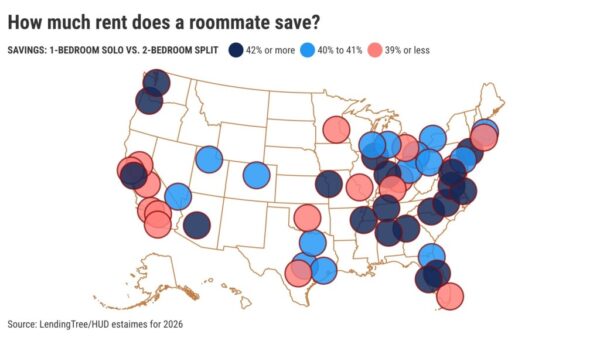Finding ways to save money can feel overwhelming, especially when financial goals require significant cuts to a monthly budget. For those seeking to free up an additional $1,000 each month, even after eliminating expenses such as coffee runs and dining out, there are still practical strategies to consider. Financial expert Roy Lederman of the Million Dollar Round Table suggests treating one’s budget like a home downsizing, advocating for a thorough reevaluation of all expenses to make impactful changes.
The following suggestions outline various avenues to trim down costs, and include both drastic lifestyle adjustments and subtle financial tweaks that can lead to substantial savings.
Grocery Shopping: Save Up to $242 Monthly
One area where many households can find savings is in their grocery bills. According to the Environmental Protection Agency, the average four-person household in the United States wastes about $56 each week on uneaten food. By eliminating this waste, households could potentially save around $242 monthly.
To achieve this, Lederman recommends planning meals around overlapping ingredients, utilizing store loyalty programs, and making fewer but larger shopping trips. Additionally, consider using cash back credit cards for grocery purchases. For instance, the American Express Blue Cash Preferred card offers 6% back on groceries, while the Costco Anywhere Visa provides 2% on Costco purchases and 5% on gas. These strategies can help households earn back some of their grocery expenditures each month.
Streaming Services: Cut Costs by $50 Monthly
Many people spend an average of $50 monthly on streaming services. However, there are creative ways to reduce this expense. Some credit cards offer streaming credits, while mobile carriers and internet providers may include free subscriptions with certain plans. For example, T-Mobile provides a free Netflix, Hulu, and Apple TV+ bundle with select mobile plans.
Taking advantage of seasonal deals can also lead to savings. For instance, Peacock offered a full year of service for just $24.99 during a promotional period. By combining this with a promotional credit from a credit card, users could secure a year of streaming for a fraction of the usual cost.
Utilities: Reduce Monthly Bills by $122
On average, American households spend around $143 on electricity, $80 on gas, and $83 on water, according to the Energy Information Administration and the American Gas Association. Making small adjustments can lead to significant savings.
The EPA offers tips that can help reduce water bills by approximately $31 per month, while the Department of Energy suggests that households can lower energy bills by up to 25%. Additionally, downgrading internet service can save around $20 monthly, especially if one is renting equipment instead of purchasing it outright.
Debt Management: Free Up $360 Monthly
Debt is a significant burden for many households, with the average American family carrying approximately $151,000 in debt, as reported by WalletHub. Lederman advises that refinancing options are more favorable with decreasing interest rates, making it a prime time to consolidate high-interest debts.
Refinancing a mortgage to a rate at least 1% lower could save around $100 monthly. Moreover, consolidating credit card debt at a lower interest rate could yield additional savings of about $40 monthly. For those considering transportation expenses, trading a new car for a reliable used one can save approximately $220 each month.
Insurance: Save Up to $360 Monthly
Insurance premiums can also be trimmed significantly. By shopping around for new policies, individuals can save an average of $461 annually on car insurance alone. Increasing deductibles can lead to further savings, with potential reductions of 25% on premiums.
Should households choose to downsize from two cars to one, they could save an additional $2,100 each year. By implementing these strategies, individuals can effectively manage their expenses while maintaining their lifestyle.
In conclusion, freeing up an additional $1,000 per month is achievable even after making significant cuts to discretionary spending. With careful planning and strategic adjustments, households can create a more manageable budget without sacrificing comfort or quality of life.







































































